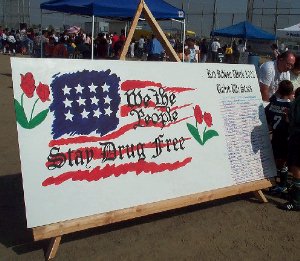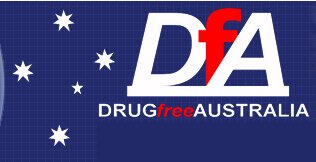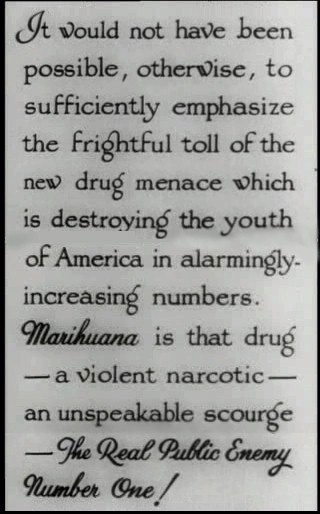NIDA: Themes in Chemical Prohibition, William L. White, 1979
http://www.druglibrary.org/schaffer/History/ticp.html
3. Survival of the Culture
is Pictured as Dependent on Prohibition or Continued Prohibition
of the Drug


|
|
"...elimination of the drug and its use is thus characterized as
crucial for the survival of the culture"
|
|
Implicit in the attribution of society's problems to the use
of particular chemicals is the assumption and implication that
these problems will disappear as prohibition becomes effective
The elimination of the drug and its use is thus characterized as
crucial for the survival of the culture. Such claims have been
characteristic of nearly all prohibitionist movements. For
example, the following editorial warning appeared in the New
York Times on June 28, 1884:
The decadence of Spain began when the Spaniards
adopted cigarettes, and if this pernicious practice obtains
among adult Americans the Ruin of the Republic is at hand.
31

|

|

| |
the idea is to associate
prohibition with community, nation, etc.
|
|
|
Purley Baker writing in the Anti-Saloon League Yearbook of
1914 implores: "If our Republic is to be saved, the liquor
traffic must be destroyed,"32 and Henry
Ford speaking in support of alcohol prohibition stated the
following in 1928:
|
"If the law were changed, we'd have to shut down our
plants. Everything in the United States is keyed up to a new
pace which started with Prohibition. The speed at which we run
our motor cars, operate our intricate machinery, and generally
live, would be impossible with liquor. No, there is no chance
even for modification."33
|
|
(below)
From the intro of the movie, "Reefer Madness" (1936).
Richard Nixon echoes Reefer Madness with the same wording,
declaring "drugs" to be "Public Enemy Number One" --
just like the movie, 35 years earlier.
|

|
|
Such pronouncements on the presently illicit drugs have been
echoed through the past decades perhaps culminating in the
announcement by then President Richard M. Nixon in June, 1971
that
"The problem has assumed the dimensions of
a national emergency . . .
America's Public Enemy No. 1
is drug abuse."34
|